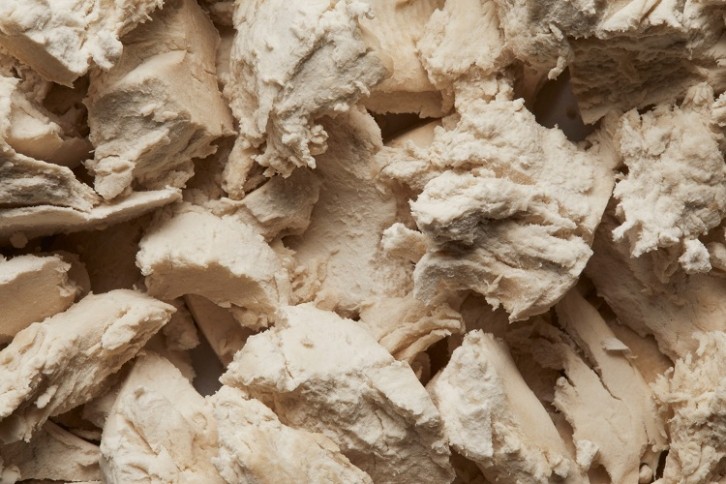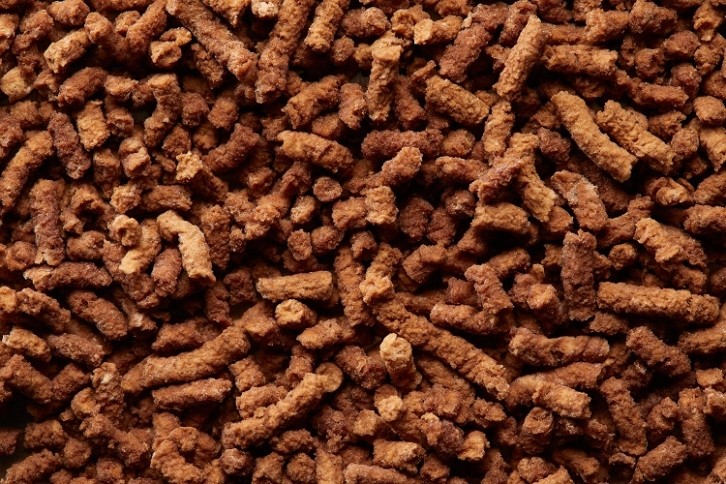The manufacturing facility, in response to Enifer, may have the manufacturing capability of 3m kilograms annually, roughly the equal in protein of 30,000 cows. Nonetheless, it would, the corporate suggests, emit 20 occasions fewer carbon dioxide emissions. It’s anticipated to be accomplished by the top of 2025, costing round €30m to construct, and can begin manufacturing in 2026.
The funding got here from the European Union’s NextGenerationEU and was accepted by Enterprise Finland. It was allotted for ‘recycling and reuse investments’ and can allow Enifer to construct its manufacturing facility. Utilizing industrial by-products and waste streams, the manufacturing facility aligns with the EU’s goals to create a round economic system.
A brand new mycoprotein product
The manufacturing facility can be used to provide the corporate’s new product, a protein and fibre-rich mycoprotein-based powder with ‘impartial’ style and color. It plans to file for regulatory approval for this ingredient within the first half of this yr.
“In comparison with commercially obtainable mycoproteins similar to Quorn, (whose) moist and fibrous mycoprotein product is usually utilized in meat analogues, our meals grade PEKILO is a dry powdery ingredient, offered for B2B and utilized in an identical method as plant protein concentrates and isolates as an ingredient in numerous meals purposes,” Joosu Kuivanen, Enifer’s co-founder and COO, instructed FoodNavigator.
“It’s impartial in style and color whereas containing an sufficient proportion of every of the 9 important amino acids. It additionally incorporates about 30-35% fibre, of which about half is fungal beta-glucan. Past the meat analogues . . . it may be utilized in pasta, bread, candy baking and dairy alternate options.”
Dry, powdery mycoproteins are, Kuivanen pressured, fairly novel within the European meals panorama. “In Europe, The Protein Brewery develops considerably related ingredient(s) for meals purposes. Nonetheless, they’ve their very own course of and fungal pressure belonging to completely different species. So, it’s a bit like beef and pork in animal proteins.”
He envisions that “dry mycoprotein substances will change into common meals substances much like soy at the moment.”
The PEKILO course of
Enifer makes use of PEKILO fermentation to provide its mycoprotein. The “PEKILO course of is a steady submerged fungal fermentation. It implies that the feedstock (i.e. business by-product) is repeatedly fed right into a bioreactor (stirred tank reactor) through which PEKILO fungus grows by consuming the carbon sources of a by-product,” Kuivanen instructed us.
It’s a steady bioprocess, that means that the grown PEKILO mycelial biomass is repeatedly harvested utilizing power efficient mechanical solid-liquid separation in, in response to Kuivanen, a course of that ‘resembles the straining of recent cheese.’ Afterwards, it’s damaged down and dried into mycoprotein powder.
The PEKILO method has an extended historical past, stretching again to the Seventies when it was developed by Finnish forest engineers as the primary industrial mycoprotein manufacturing course of. In its authentic kind, the method used forest business by-products to create feed protein. Now, Enifer has up to date the method to go well with its personal wants.
“Within the authentic PEKILO vegetation, operated in Finland between 1975 and 1991, spent sulfite liquor, a liquid facet stream from sulfite pulp mills, was used as feedstock for the PEKILO course of. Nonetheless, only a few such pulp mills are nonetheless in operation. Subsequently, we’ve got additional developed and optimized the PEKILO course of to make use of a number of completely different by-products, not solely from the forest business. Mainly, any by-product that’s liquid (no strong materials) and incorporates no less than 2% carbon sources similar to residual sugars, glycerol and/or natural acids that PEKILO fungus can eat might work.
“For the meals grade PEKILO mycoprotein manufacturing we’ve got optimized the method for liquid by-products from the meals business. For instance, we are able to use lactose-containing permeates obtainable as dairy business by-products. Mainly, all types of liquid meals business by-products might work.”
PEKILO fermentation is, in response to Kuivanen, very completely different from the strategies utilized by mycoprotein giants similar to Quorn. “In Quorn and plenty of different mycoprotein fermentations the filamentous construction of the fungus, sometimes Fusarium venenatum, is harnessed to create the fibrous construction of the ultimate product that’s sometimes a moist mycoprotein to be delivered in a chilly chain. Within the PEKILO course of, the filamentous construction of our proprietary pressure, belonging to the fungus Paecilomyces variotii, is harnessed in extraordinarily environment friendly steady harvesting of the mycelial biomass from the method which is then damaged down and dried into dry powdery mycoprotein ingredient that doesn’t want the chilly chain.
“As well as, our PEKILO fungus is thermophilic, that means the method is run at increased temperature (37°C) in comparison with probably the most different mycoproteins. This implies much less power is required for cooling the method.”
Quite than utilizing pure sugars as feedstock, similar to in ‘typical’ mycoprotein processes, PEKILO’s fungus has, in response to Kuivanen, ‘very versatile capability’ to make use of completely different carbon sources. Moreover, very dilute by-products can be utilized as feedstock.
“Which means that we are able to use very low worth by-products that are troublesome to valorise in different methods. As a substitute of optimizing the construction of the top product, the PEKILO course of was designed to optimize the effectivity of the manufacturing and dietary worth by way of digestibility and amino acid content material because of the historic utilization as land animal feed ingredient. This additionally implies that the manufacturing prices of PEKILO are comparatively low.”
Decreasing water and land use
Due to the variety of side-streams that can be utilized as feedstock, Enifer’s water and land use are ‘considerably’ decrease than that of animal protein manufacturing. Their very own land use is minimal, and many of the land use related to the manufacturing course of comes second-hand from the facet streams.
“A number of the by-products, like permeates or vinasse, that can be utilized as feedstock in PEKILO course of are literally typically used as animal feed, through which case they’re first concentrated i.e. water evaporated, after which they’re fed to animals which can be consuming massive quantities of water of their lifespan. In our case, we use the by-product as liquid in our course of and a part of the water is even recycled,” Kuivanen instructed us.
Land use is decrease just because the plant’s space can be a lot smaller than the equal space of agricultural land wanted to provide the identical quantity of protein in animal flesh.




